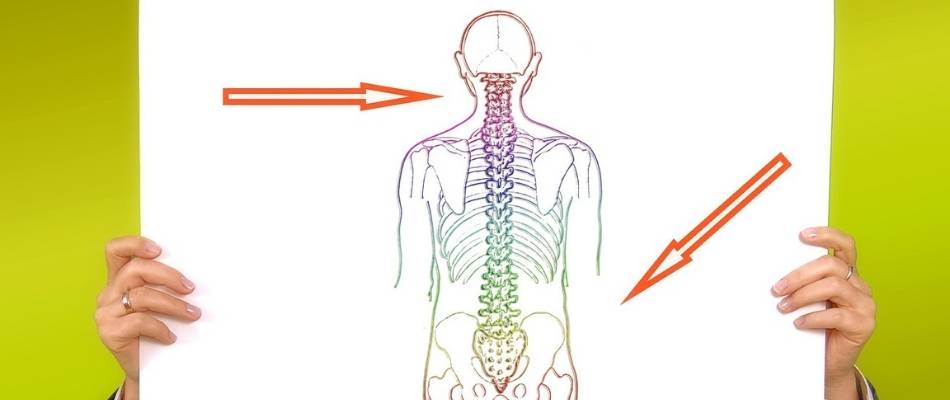After 20 years of teaching tai chi it is interesting to see the shift in reasons why people are interested in tai chi. From mindfulness, to reducing stress, and even mobility issues. And now, a constant flow of primarily men wanting to know: how does tai chi help with back pain? It’s no wonder considering that 50-80% of all adults experience at least one episode of back pain1 with it now being one of the most common reason for filing for disability claims and missing work.2 The rise in interest also makes sense because more and more research on how tai chi is successful at reducing or eliminating back pain is reaching the masses.
Research indicates that using tai chi for back pain is successful because of a focus on strengthening stabilizer muscles, improvement to posture, elongation of the spine, and rotational movements that take constant pressure off the vertebrae. There is also a correlation between back pain decreasing when stress is reduced and tai chi reduces stress.
Let’s summarize recent research on using tai chi for back problems so that you know tai chi works. This is not a cure-all but when used with other treatments it has great results. Then I am going to show you how I used tai chi effectively along with six other suggestions to completely recover from two herniated discs. But first, let me share what happened to me.
My Journey Through Tremendous Lower Back Pain
Like so many guys that come to my class, I had no idea how I hurt my back. One morning when I was running I felt really slow. The next morning when I got out of bed, something “snapped” and I fell down to the floor and couldn’t get up. The pain was constant and excruciating. When I walked my dog and he yanked on the leash I saw stars. I went to the doctor and was given a ton of drugs for “spasms.”
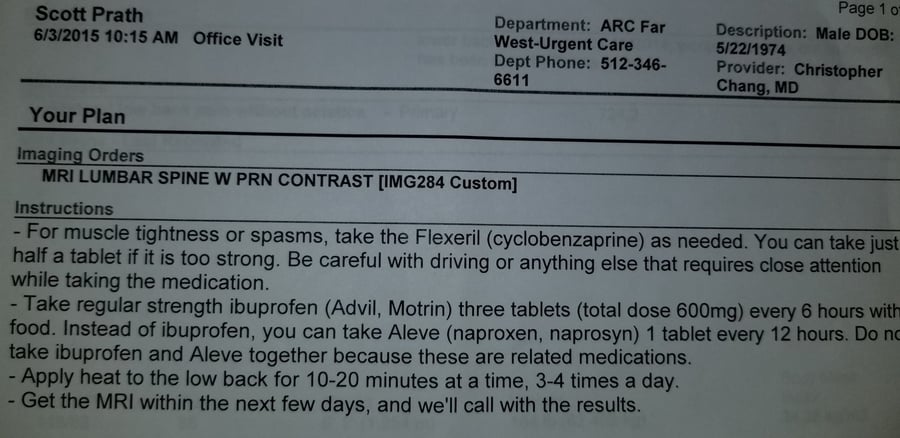
Needless to say, the drugs didn’t work and I was so loopy that I couldn’t really drive after taking them. So off I was sent for a very expensive MRI to find out I completely herniated a disc on one side and a disc was protruding on the other side. Basically, if I bent forward or backward I saw stars.
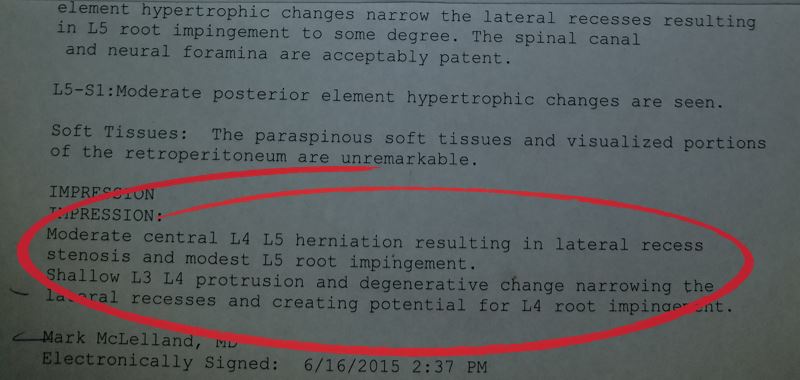
Here’s where the story got scary for me. The back specialist said that I had three options.
“GREAT!” I said. I was so relieved.
He said I could begin to take pain killers, get a shot in my spine, or elect for surgery.
I nearly fainted and asked how it happened. He said that most people don’t get injured, it just happens over time. He explained that I was just over 40 and discs just get warn out. Did I know how many guys like me came in there each day? I thanked him and said I would think about it.
I went the PT route and once that was deemed ineffective I started getting letters like this explaining how my wife could get benefits if I had to go on disability. Not a high point in my life.
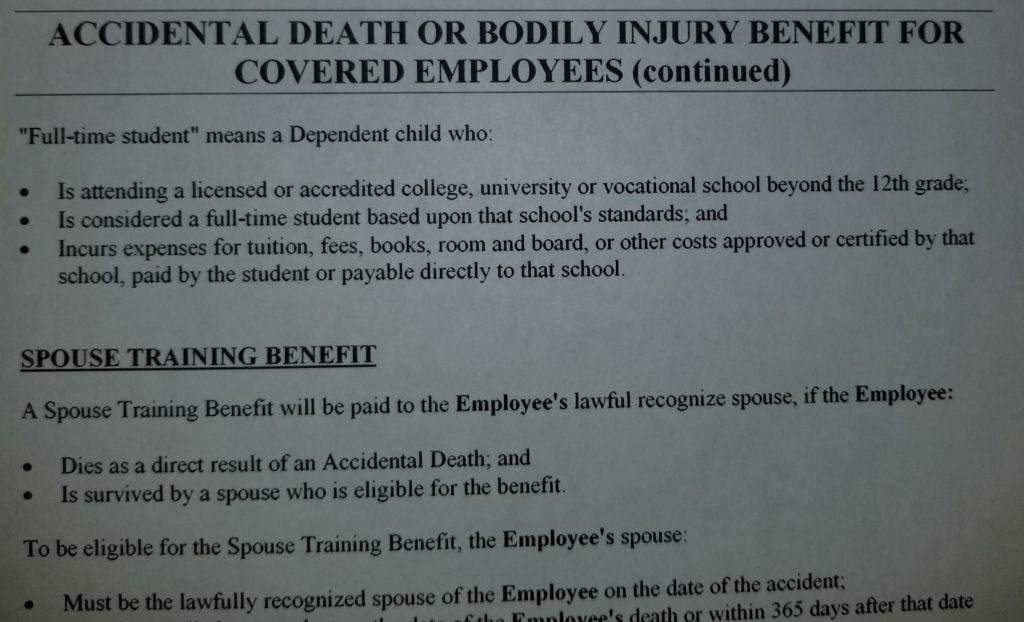
Now I want you to fast forward with me. Because here is me at age 48, deadlifting almost twice my weight (335 lbs).
Can tai chi help back pain? Absolutely
How can this be? How could I get to full recovery? And what was the path I took to get here? I want you to know before we dive in that this was not a quick process. Secondly, in line with the current research but contrary to a lot of the sensationalistic resources out there, tai chi cannot heal your back alone. It is one tool used in conjunction with a series of important decisions you need to make.
But I am writing this article because I truly want this for you. Not less pain but a full recovery. So, let’s start with the research and then I will show you six things you can do to make it a reality for you.
How Does Tai Chi Help With Back Pain? The Research is In
With these next several articles I want to paint you a picture of research stretching back across the last decade. Participants were successful in using tai chi for back pain with:
- people age 20-80
- men and women
- in isolation (reducing but not illuminating)
- in conjunction with other treatments
- in comparison to stretching, yoga, and other treatments.
You can deep dive into the specific articles if you like but by the end I just want you to be confident that tai chi can help with back pain in many situations.
8 Studies Showing that Using Tai Chi for Back Problems is Beneficial.
- Effects of Tai Chi on Pain and Muscle Activity in Young Males with Acute Low Back Pain. 20-year-old males with lower back pain were given a protocol of tai chi or stretching. Tai chi showed a greater effect of lowering pain.
- Tai Chi and Chronic Pain. Five pain conditions were reviewed and Tai Chi found to be an effective intervention in osteoarthritis, low back pain, and fibromyalgia.
- Effect of Tai Chi alone or as additional therapy on low back pain. Tai chi used alone or in conjunction with physical therapy was effective in reducing lower back pain.
- Tai chi exercise for treatment of pain and disability in people with persistent low back pain. 160 18-70 year-olds practiced tai chi for 10 weeks and had moderate reductions in “bothersome” back symptoms and pain intensity.
- The Effects of Tai Chi Chuan Versus Core Stability Training. 43 men and women were tested and statistically significant improvements to strength and flexibility were found in people doing tai chi or core stability training.
- Effectiveness of Tai Chi Practice for Non-Specific Chronic Low Back Pain on Retired Athletes: A Randomized Controlled Study. Active adults in their 30s showed significant reductions in back pain after a six month intervention. Swimming or practicing tai chi were successful over backward walking, jogging, and no exercise groups.
- Perceived Benefit of Complementary and Alternative Medicine (CAM) for Back Pain. Yoga, tai chi, qi gong, and acupuncture had similar perceived benefits as chiropractic work.
- A Narrative Review of Movement-Based Mind-Body Interventions. 32 studies were reviewed finding that tai chi and yoga both had positive effects on back pain, physical function, and psychological symptoms associated with low back pain.
Tai Chi Vs Yoga for Back Pain
You can see from the last two studies that there is a lot of comparison going on between tai chi vs yoga for back pain treatment. These are the two most tried non-invasive and non-drug related treatments for back pain. For certain types of back pain people have also reported getting relief from Pilates but it is more strenuous. Most of the research lands in the middle saying that they are both effective. However, there is fault in this analysis because it is treating all back pain as a single thing.
My specific back injury was of the type that holding postures, even laying down was painful. So while tai chi was the perfect solution for me, yoga would have killed me. Conversely, many sufferers of back pain go completely weak with movement. Yoga might be a better option for them. Know that the research suggests that tai chi and yoga can be as good as other common treatments. Moreover, they enhance all other treatments including drug therapy. So if you are choosing between tai chi vs yoga for back pain, know that yoga uses static postures and tai chi is movement based. Understand what type of injury you have sustained so you can correctly choose between the two. Don’t get me wrong, when I was at my lowest point all interventions hurt (stretching, PT, tai chi…) but the ones for me gave me some relief or I got a tiny bit better (movement) and the others (stretching) made me worse. This will be specific to YOU. The best thing to do is just try both out!
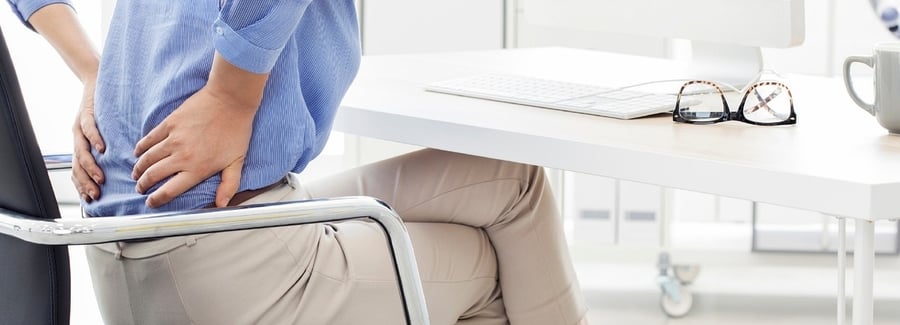
Why Did the Research Apply Tai Chi for Back Problems and How Does it Help?
It’s clear that 1) most people are give the traditional three options for chronic back pain being drugs, invasive shots, or more invasive surgery. 2) these are expensive to both the medical community and the person. Adding together my MRI and all my treatment and I was out over $2000. And 3) sadly their results are not that great.
So it makes sense for everyone involved to explore non-invasive treatments that help the big three or result in them not being needed at all. The researchers used tai chi for back problems without another treatment to see if they could get improvement. They did. They used tai chi in conjunction with drugs and PT to see if they could get improvement. They did. They tried it out on variety of ages and genders. It worked. They looked to see if one “alternative solution” (I hate the word alternative) was better than another. They found them to be equal but I say it is specific to the person.
How Does Tai Chi Help With Back Pain?
Movement
Tai chi teaches how to move without causing pain. There are no sudden moves. Steps are “empty” meaning you step and then transfer your weight instead of falling on it.
Breathing
Breathing become shallow when you are in pain and you actually have to retrain the body to take full breaths. Full breaths tell the nervous system to calm down and that every thing is all right. Short breaths heighten stress by keeping the system highly oxygenated.
Expansion
Back pain is normally caused by impingement of the disks. Tai chi teaches a constant stretching from the tailbone to the top of the head elongating the spine. These even works for seated tai chi for back pain you just push from your sits bones up through the crown of the head.
Rotation
All tai chi movements are circular and teach proper rotation of the spine through work. As an example, from a seated posture just turn to your left. Now, do it the tai chi way. Push up through the crown of your head and lead with your ear like you are trying to eaves drop on a table behind you. End by staring out the corner of your left eye. Do you see how the first way probably just bent your right lower rib against your right oblique while the tai chi way expanded up through the spine?
Strengthening of Stabilizer Muscles
The abdominals that hold you in that beautiful tai chi posture are also the same muscles that keep you erect while sitting and standing giving your disks a chance to heal.
Stress Reduction
When working through injuries it takes a while and it can be worrisome. Not only does the injury cause worry, but regular old worry in your life reduces your ability to heal because they encourage a consistent release of chemicals that are associated with inflammation. Stress reduction is healthy in any situation but is mandatory if you are trying to heal.
Repatterning
I saved the most important for last because this is exactly why tai chi can eliminate back pain while the other treatments often just reduce it. Tai chi teaches you to move in a completely different way. What this means is that you shift from the bent over – in pain posture back up to something proud. That you learn to hold an erect posture while sitting and standing.
This repatterning is most important when you undertake other treatments because as your body’s configuration changes, if you don’t work to repattern how you are, you will go back to how you were. Here are some examples:
- Chiropractic adjustments feel good at first but lose their affect if and when your muscles pull you back into your old alignment
- Running releases endorphins and get you in shape but running with poor posture increases the impact on your feet and stress on your lower back
- PT stretches your muscles into comfortable positions but you tighten back up if you don’t do your exercises
- Drugs do not reduce pain. They reduce the degree you sense the pain. When the drugs wear off the pain is still there.
So when I say that tai chi helps with back pain what I am trying to convey is that it actually does two things. One, it DOES relieve back pain. But two, it helps maintain the gains you make with any other treatment by training your body to sit and move in new ways. I don’t think that the research is wrong here. I actually think they have not gone far enough. I understand their reluctance to say that tai chi cures back pain because it doesn’t do it alone. But on the other hand, do we want our goal to be to just reduce the pain?

6 Keys to Releasing Your Back Pain
Notice that I am saying “release” your back pain. The pain is something that you possess. It is something that you are holding on to by being inflamed, bent, stuck, or restricted in the wrong position. Here’s where I get philosophical in a tai chi way. Tai chi is not just doing. It is learning to relax, to stop the activity that is causing the problem. It is more like undoing.
Here are the six things that brought me to full recovery. Know that this was my journey and yours might look different but I have counseled enough class attendees to know that having less pain is nearly guaranteed and completely healing is possible. Most of these are free, some cost a few dollars and one is expensive. But, if you are like me, it is cheaper than surgery or continual shots and meds. And tai chi empowers us to take control of our health.
1. Knowing Someone Else Was Successful
It is shocking how many 30-50 year old guys have lower back pain. It is half of us! And the first thing that happens when you admit to a friend you are in pain is that you get commiseration but rarely solutions.
“Yeah, me too.” “Yeah, you’re getting old.” “Yeah, you could be worse. Tony needed surgery.”
I drank the permanency Kool-Aid too until I heard about one, then two different guys who had healed themselves. Listen to these two podcasts. Shawn Stevenson had degenerative back disease and healed completely. Tristan Truscott had a debilitating back condition and healed completely.
We don’t have to accept back pain as the price for getting old(er).
TMHS 12: Treating Back Pain, Degenerative Disc Disease & “Incurable” Diseases
TMHS 020: Health Benefits Of Qigong With Sensei Tristan Truscott After listening to this it is the reason why the qigong set he teaches is the only one I recommend and the best way to learn qi gong at home.
2. Hydration with Water
That’s right, you read that correctly. Drink water, and uh, with lemon. So simple but it has huge implications. Here are the nuts and bolts::
- Your spine is reverse-hydrostatic meaning that it doesn’t get fully hydrated until the rest of you body is sufficiently hydrated forcing water into the center.
- Your discs can’t heal with the constant downward pressure of the vertebrae.
- Hydrated vertebrae extend the spine.
- And lemon changes the pH of water so that it is more absorbable.
Don’t take my word for it. Listen to this. TMHS 73: Hydration & Water Masterclass – Best Water Filter, Best Bottled Water & Critical Water Facts
3. Posture While Sleeping
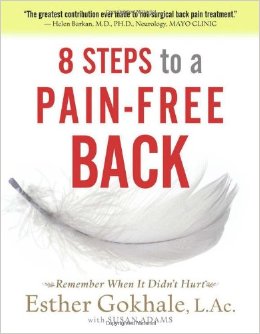
This is the second shocker that I had. 8 Steps to a Pain-Free Back was written by someone who did anthropological research on cultures where there is no incidence of back pain. As she studies people that are tall, fat, bend over all day, and sit all day, she blows every excuse out of the water as to why so many people have back problems.
The book is eight postural changes to give your back the chance it needs to heal. The most important lesson I learned was learning how to sleep as the body uses the night to repair itself.
4. Reducing Inflammation By Changing Your Diet
Here is the long story short on this one:
- If your body is in a state of inflammation it is really difficult if not impossible to heal.
- Inflammation can be reduced through diet.
If you are new to this idea you need to educate yourself. I prefer the writings of Steven Gundry because he is diet-agnostic. You can be vegan/vegetarian/paleo/keto/nothing and still reduce your inflammation. His audiobooks are also really easy to listen to. Check out:
The Plant Paradox
The Energy Paradox
Unlocking the Keto Code
5. Rolfing or Some Sort of Fascia Release
Rolfing is a type of deep tissue massage aimed at manipulating fascia and muscle to realign the body. It is not gentle like a massage and actually can be quite painful. It was described to me that muscle and connects run in a certain direction. If you get injured, the repair of the muscle is sideways and can shorten the muscle. By breaking up this tissue you body can spring back into the correct posture.
Rolfing is not cheap. It is a series of 10 sessions that cost around $100-$150 on average. Sometimes you can get a discount for paying for all 10 sessions at once. Here is why I am advocating it, especially for guys.
Trying out myofascial release for lower back pain
It was suggested that I go see someone for “bodywork” when I was running out of other options with my back pain. The women asked me tons of questions from my past during the interview specifically questioning my physical fitness and any injuries I had. I ended with my usual sad story of “I don’t know how this happened to me!”
She looked at me like I was an idiot and said: “So you played high school football (she bent over), and you were in the army (she bent like she was using a gun), and you got hit by a car on your bike three times (she bent over like she was scared), and you mountain bike (she bent like she was holding handlebars), and you hike (she bent like she was holding backpack straps). Yeah (insert sarcastic tone), I have no idea why your lower back gave out.”
The humiliation wasn’t over at that point so she continued. “There is a name for your condition and a way to treat it.”
“What is it?!” I exclaimed excitedly.
“You have Adonis Syndrome. You only lift weight on the muscles you can see in the mirror! This is also pulling your body forward against a weak back.”
So for me, a lifetime of crashes, ego, and activities that pulled me forward finally “popped” my weak hinge of a lower back. Your story will be different but every injury, hobby, and habit is changing your frame. Rolfing or fascia release, even at the price they charge, I found to be a permanent way to release my back pain.
6. Tai Chi Exercises for Back Pain
If you are going to spend the time learning, undertake new activities, and pay money, don’t you want the changes to be permanent? This is where tai chi came in? I think that any of the five things above will give you temporarily relief or reduce your pain. However, tai chi has the power of ingraining your new movements and postures to make them permeant. Without taking time to change how you walk, stand, sit, sleep, and move, you will go back to the postures that got you into trouble in the first place.
Here is where you need to find a class and ask the instructor for tai chi exercises for back pain. People ask me all the time for specific movements to help a tweaked knee, trick shoulder, and yes, back pain. You can definitely find something online but I can’t vouch for the results. Basically:
Great tai chi exercises for lower back pain include:
- squatting with knee rotations
- balancing on one leg where you push the lower back out
- moves like “white crane” where you push up from the crown of the head and down from the tailbone simultaneously
- moves that teach you how to step without falling with your weight on your foot
Great tai chi for neck and back pain focuses on:
- rotating while extending the crown of the head up
- moves that stretch the arms out and up (think Good Morning!)
- moves that stretch the arms back opening the chest
- moves that look up stretching the tight muscles of the throat
- moves that concentrate on breathing so that you fill your lungs fully forcing you into a proud posture
Using Seated Tai Chi for Back Pain if it is Severe
One last note here. You can do seated tai chi for back pain by using a chair with arms. Tai chi works in a chair. I did it to recover. You are not a ninny. If you have the type of pain that “makes your back go out” then use a chair and pushing up from the sits bones through the crown of the head instead of from the heals. And if you are starting from a place where you are over weight, there is research showing tai chi can help but you may need to start more gradually.
References:
- Rubin, Devon I. “Epidemiology and risk factors for spine pain.” Neurologic clinics 25.2 (2007): 353-371.
- Hoy, Damian, et al. “The global burden of low back pain: estimates from the Global Burden of Disease 2010 study.” Annals of the rheumatic diseases 73.6 (2014): 968-974.
- Why Doctors Don’t Recommend Tai Chi
- Top Tai Chi Exercises for Specific Injuries and Illnesses with Videos


